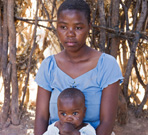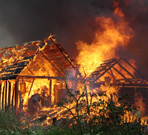A Lack of Clean, Safe and Efficient Lighting

Throughout the world today, fuel-based lighting or common candles pose a daily health and safety hazard to more than 1.6 billion people simply trying to provide lighting for themselves or their families.
For those who don’t have access to electricity, having a reliable lighting source could mean many extra hours in the day for work, study and play. Unfortunately, too many must rely on centuries-old lighting resources, with no upgrades to electrical infrastructure in sight. Fortunately, PureRay has a solution.
For those who don’t have access to electricity, having a reliable lighting source could mean many extra hours in the day for work, study and play. Unfortunately, too many must rely on centuries-old lighting resources, with no upgrades to electrical infrastructure in sight. Fortunately, PureRay has a solution.
Health Risks from Fuel-Based Lighting

The World Bank estimates that 780 million women and children
breathing kerosene fumes inhale the equivalent of smoking two
packs of cigarettes a day.
Identified Pollutants
-
Nitrogen Dioxide
-
Benzene
-
Toluene
South African studies have shown that more than seven out of ten households in low-income metropolitan areas rely on kerosene for domestic purposes, leading to widespread problems of poor indoor air quality. Volatile Organic Compounds (VOCs) cause eye, nose and throat infections; kidney and liver afflictions; and are carcinogenic substances that are released into the atmosphere. .
Safety Risks from Fuel-Based Lighting

Every year many homes and even entire communities burn to the ground when a lamp is knocked over.
Environmental Risk from Fuel-Based Lighting
Fuel-based lighting in the developing world is a source of 244 million tons of carbon dioxide emissions to the atmosphere each year. In India alone, kerosene lamps emit 75 million metric tons of greenhouses gasses each year.Burning kerosene lamps indoors produces the following pollutants:
- Carbon Dioxide (CO2) causes global warming.
- Carbon Monoxide (CO) replaces the oxygen indoors and can be fatal.
-
Nitrogen Oxides and Sulfur Oxides (NOx, SOx) cause lung and eye infections, respiratory problems and cancer. They are also contributors to acid rain and ozone depletion.
Fuel-Based Lighting is Poor-Quality Lighting
The amount of light from a fuel-based lamp is only about 0.2% of what populations of industrialized countries receive for the same price. And, the light is only 2 to 4 lumens, compared to a 60-watt bulb with 900 lumens. The light is so poor that children can only see their books if they are almost directly over the flame they use to see.Students can only practice very basic reading and writing skills after dark when they are dependent on inconsistent light provided by kerosene wick lamps and wood fires. They inhale even more of the toxic smoke as they move closer to the light source. Besides being unhealthy, trying to do school work with a kerosene lamp creates a barrier to education and learning.
Fuel-Based Lighting is Expensive
Families spend up to 15% of their income on kerosene for lighting alone. Furthermore, collecting fuel places a huge strain on women and children who have to walk four to six hours each day for this purpose alone. This explains the significant international support for solar-powered LED lighting.This is why there is significant international support for solar LED lighting.

“There is not enough time in the day to extend the electricity grid. We need a more immediate solution. When the cell phone arrived, suddenly it made no sense to wire countries up to the landline network. I think you can have the same impact with [solar] LED lighting”
Russell Sturm,
International Energy Expert,
International Finance Corporation of the World Bank
Russell Sturm,
International Energy Expert,
International Finance Corporation of the World Bank